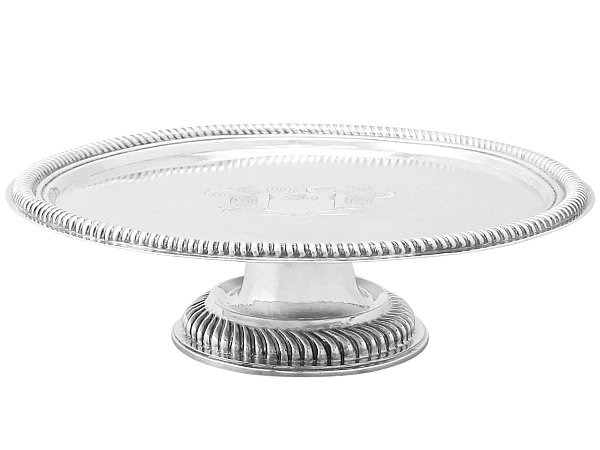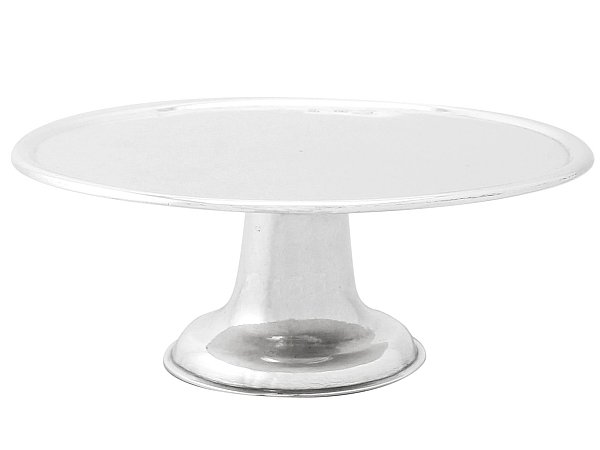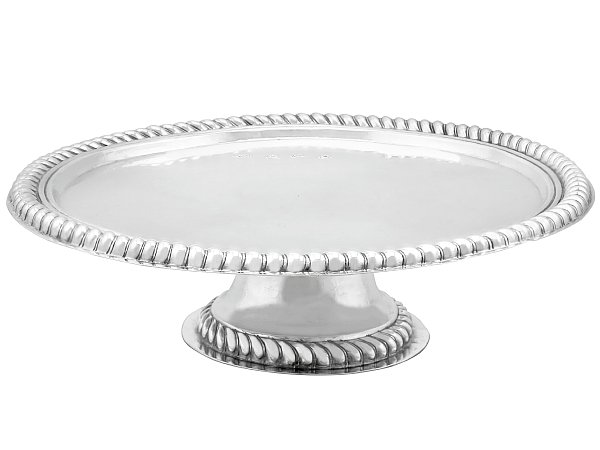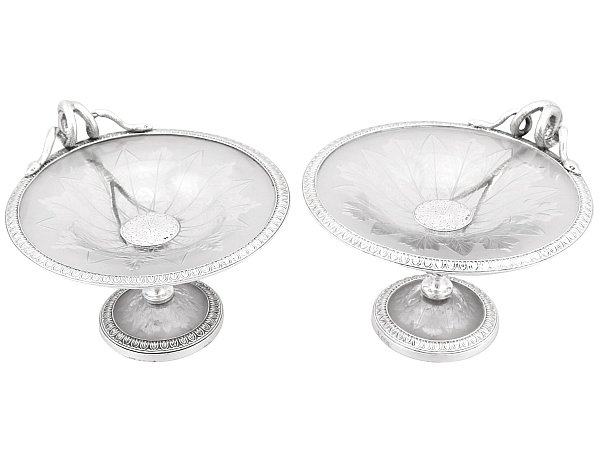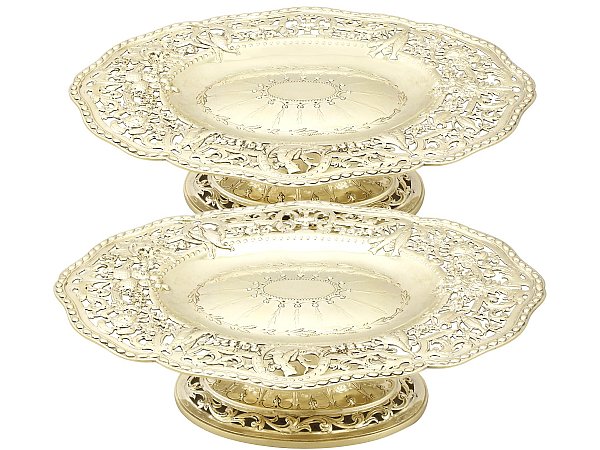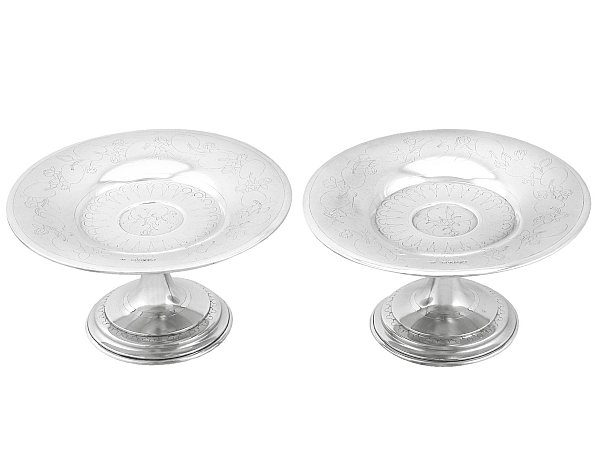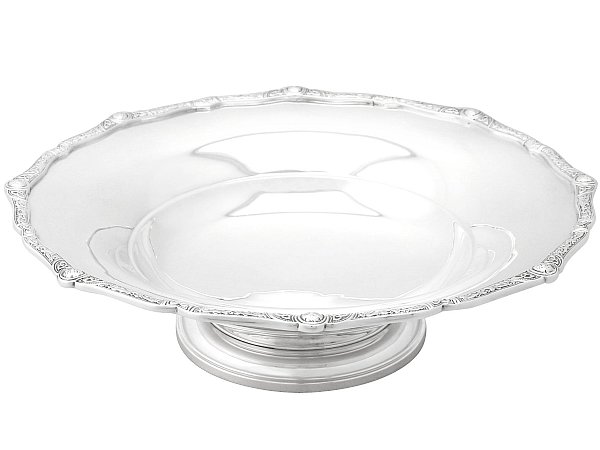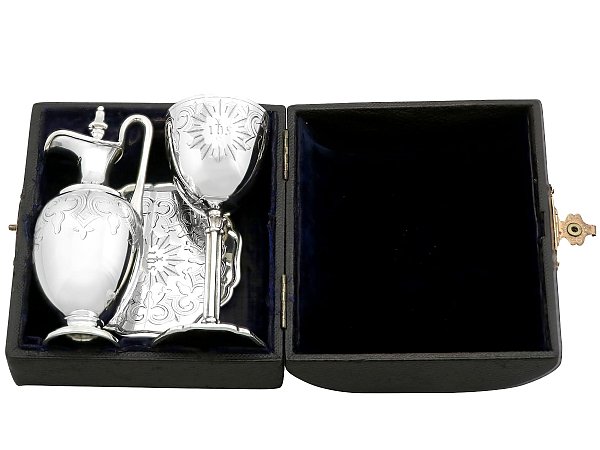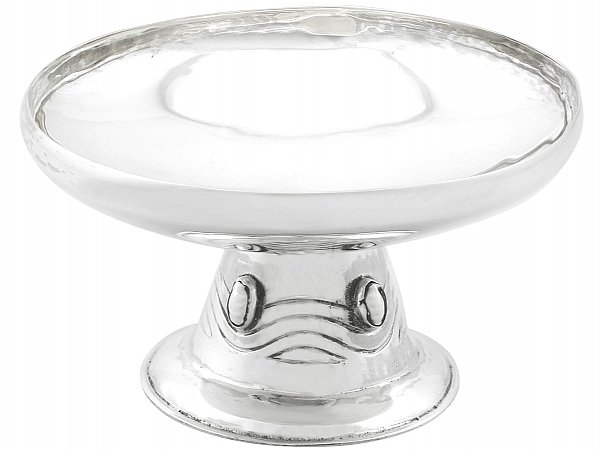Silver Tazza
Antique and Vintage Silver Tazza for Sale
Explore our stunning collection of antique and vintage silver tazzas for sale. Our collection includes fine examples from many eras including Edwardian and Victorian tazza dishes.
AC Silver offer a 14-day return policy, and include a free shipping with all glass and silver tazzas.
Andrew Campbell, using his 40 years’ experience within the antique industry, handpicks all antique silverware, for sale.
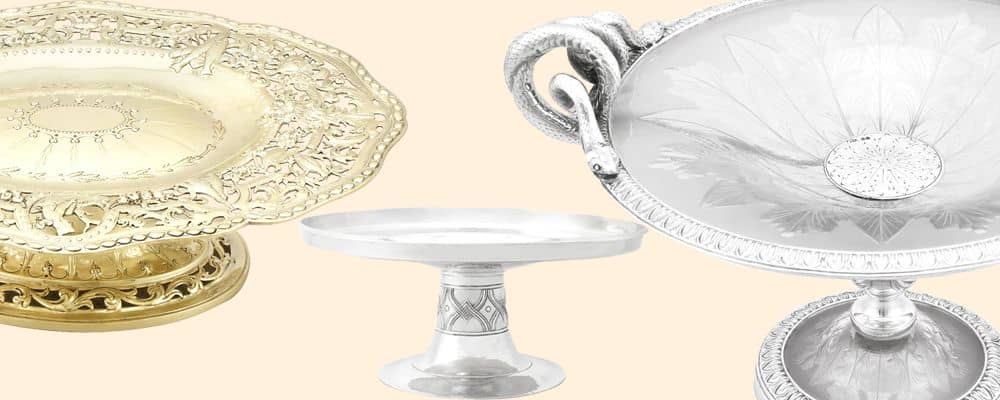
Silver Tazza Frequently Asked Questions
A tazza is a wide, shallow dish which sits atop a short stem with a wide based foot, or a short foot alone. The shape and style of tazza so has been adapted and changed over time, so antique silver tazzas, which were common in the Georgian era are usually completely flat, with a border which is plain and undecorated. These antique tazzas also have short stemmed feet, which are almost as wide as the tazza plate themselves.
Other types of tazza have come to include glass dishes mounted on longer stems, which have more in common with contemporary compote dishes. A tazza stand may be used for ornamental or purposes, and particularly silver tazzas may be used as decoration, as they can be used to hold items for display, much like a pedestal.
‘Tazza’ translates to ‘cup’ in Italian, and a common questions is "what is a tazza used for?” The tazza is usually used for serving smaller items of food, such as hors d’oeuvres. The word has become slightly archaic, and mostly only refers to antique tazzas, rather than new pieces of silverware, or tazzas made from other material, such as glass or ceramics.
The tazza was used as a popular form of silver plate across Europe from around the sixteenth century, and continued to be a common feature of a dining set until the nineteenth century. The basic form of the tazza is essentially an elevated plate, and therefore it was developed as a way of utilising more space on a dinner table, and presenting a silver dish in this manner adds to the grandeur of the meal.
Some consider a tazza to be a large, shallow wine cup on a high stem, however these tazzas vary slightly to those which were designed for food, as the bowl – rather than a flat plate – mounted on the stem, suggests whether the piece was created for the purpose of serving liquid or food.
In the same manner as all antique silverware; the style which tazzas were created in across the last three hundred years depended largely on the era and location in which they were produced. Many English, Georgian tazzas are completely unembellished and created purely for purpose rather than for ornamentation, however, many continental tazzas which were produced during the Renaissance era are highly decorated, featuring figural and florid decoration, as was typical of this time.
Just as with all antique silver tableware, tazzas would have been made or be used in the homes of the wealthy and aristocracy, as the value of the silver would have meant that these pieces were too much of a luxury for most families.
Antique silver tazza stands are truly intriguing pieces, which are sure to create interest and conversation at any dining table, or in any home.
